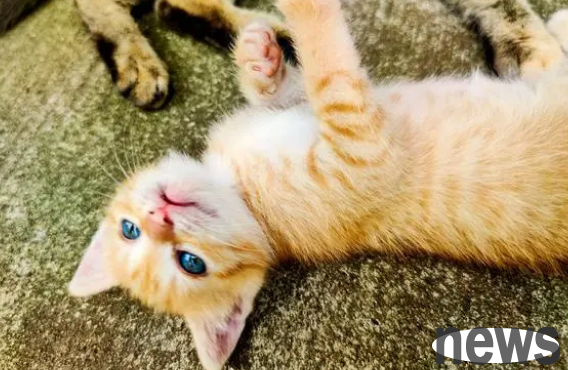In the treatment of cat kidney failure, in addition to medication and infusion, dialysis is also essential for the need for internal detoxification. Renal failure affects the filtration effect of the kidney. If nutrition and toxins cannot be filtered out in time and transported into the body and excreted out of the body, it will cause further damage to the body. Dialysis is divided into hemodialysis and peritoneal dialysis. Several years ago, peritoneal dialysis has always been the main method of renal failure dialysis. In recent years, with the continuous improvement of hemodialysis technology, hemodialysis fluid has gradually been used in medical care.

1. Hemodialysis
Hemodialysis (HD) is one of the most effective renal replacement treatments such as acute and chronic renal failure, oliguria or anuric renal disease. Hemodialysis treatment has become the most successful organ replacement treatment in the field of human medicine, but it is still a blank in animals. The purpose of kidney replacement therapy is to remove uremia toxins in the blood circulation to prevent their accumulation in tissues. Hemodialysis introduces animal blood and dialysate into both sides of the artificial semipermeable membrane, respectively, for reverse flow, and moves solutes on both sides of the semipermeable membrane through diffusion, convection, and adsorption, and removes water through ultrafiltration.
Hemodialysis step
After the animal is anesthetized and awakened, the blood pressure is measured, and the appropriate extracorporeal circulation pipeline and artificial kidney are selected according to the animal's surface area, and the concentration of dialysate A and B fluids is checked.
Power-on self-test: Turn on the water treatment switch and perform water treatment pre-flushing. Turn on the dialysis machine and conduct a self-test of the machine as required.
Installation of hemodialysis pipeline: Check that the outer packaging of the hemodialyzer and blood pipeline are not damaged, and then install it in turn according to the blood flow direction of the extracorporeal circulation, so that one end is connected to the arterial end and the other end is connected to the venous end. The dialysate pipes are connected to the entrance and exit of the dialysate chamber of the dialysate chamber respectively, and then the arterial end segment is embedded on the blood pump, and the venous air trap chamber is fixed, with the venous end of the hemodialysate facing upward.
Pipe Pre-flush: Start the hemodialysis machine and wash the dialysis pipeline and dialyzer blood chamber gas with normal saline. After the prognosis of normal saline is carried out in a closed cycle, and finally pre-rinse with heparin saline.
The basic coagulation function test of animals was measured before dialysis, ACT: 108S, check the hemodialysis catheter, use a syringe to check the blood flow and inject the first dose of heparin. After 5 minutes, the ACT value was re-examined to be 262S. After reaching the ideal value, prepare to induced blood with the machine.
Blood recovery operation after dialysis is completed: Insert a sterile needle, adjust the blood flow to 2ml/min, turn off the blood pump, clamp the artery end with hemodialysis forceps, and connect the artery end with normal saline, turn on the blood pump, and clamp the venous end with normal saline. Band the surgical site with prepared sterile gauze, elastic bandage, etc.
2. Peritoneal dialysis is relatively simple, has a relatively low cost, and the efficacy is also true. Metabolic waste and excessive moisture in the body are discharged from the body with the waste dialysate. Replacing the dialysate intermittently can achieve the purpose of quickly removing toxins, correcting acidosis, dehydration and electrolyte disorders. In layman's terms, peritoneal dialysis is the process of injecting clean liquid into the abdominal cavity and extracting liquid with toxins in the body. Before dialysis, patients with cre about 1000?mol/L can quickly drop to about 400?mol/L after one dialysis. It can effectively ensure that before renal function recovery, it can reduce azoemia, correct ion balance and acid-base balance, and supplement sufficient water, thereby reducing necrosis of nephrons and reducing animal mortality.
Peritoneal diuresis can be classified according to the flow of dialysate and the duration of dialysis. During one dialysis period, the dialysate continues to flow from one catheter into the abdominal cavity and is discharged from another catheter at the same time is called continuous dialysis (peritoneal perfusion). Due to difficulties in operation and complex reuse technology of dialysate, this technology is not commonly used at present. After the dialysis fluid is injected, it stays in the abdominal cavity for a period of time and then is discharged again is called intermittent dialysis. There is a time interval between the exchange processes of intermittent dialysis, in which the dialysate is discharged, so no dialysis occurs. At a short interval between removing the old dialysate and injecting the new dialysate, there is always a dialysate in the abdominal cavity for continuous continuous dialysis, which is called continuous dialysis. The dialysate stays in the abdominal cavity for 4-10 hours is called "sustaining non-bedding dialysis". The residence time of the dialysate during "emergency continuous dialysis" is within 1 hour. The method of keeping a part of the dialysate in the abdominal cavity, only a part of the dialysate is discharged, and the fresh dialysate is periodically injected is called tidal peritoneal dialysis. This technique is considered a hybridization model of continuous dialysis and intermittent dialysis, which is more superior than the above two, but has not been widely used in veterinary clinical practice.

There are two main difficulties in peritoneal dialysis operation:
The first point: the composition of the dialysate needs to be prepared according to different purposes of dialysis;
The second point: The most difficult thing is that due to the influence of the large omentum during dialysis, it brings difficulties to extracting liquid. Therefore, when pumping liquid outward, you must avoid the influence of the large omentum. This requires accumulating some experience and it will be very convenient to operate. If it is a novice, it may be difficult to even 1/4 of the liquid to be sucked out.
Complications of peritoneal dialysis
In the treatment of peritoneal peritoneal peritoneal therapy, hypoproteinemia, peritonitis, catheter obstruction, or dialysate retention are the most common complications. Most of these complications are manageable. The end of dialysis treatment is best for dialysis until renal function returns to normal so that the animal can survive without relying on dialysis. If the renal function of animals without dialysis treatment is insufficient to sustain life, euthanasia should be considered. After several days of treatment, even if the dialysis is smooth, the quality of life of the animal has not improved to an acceptable level, and dialysis treatment should be terminated, including the absence of improvement in the animal's biochemical indicators or the absence of clinical symptoms despite the reduction of azotemia, and the presence of uncontrollable peritonitis.
